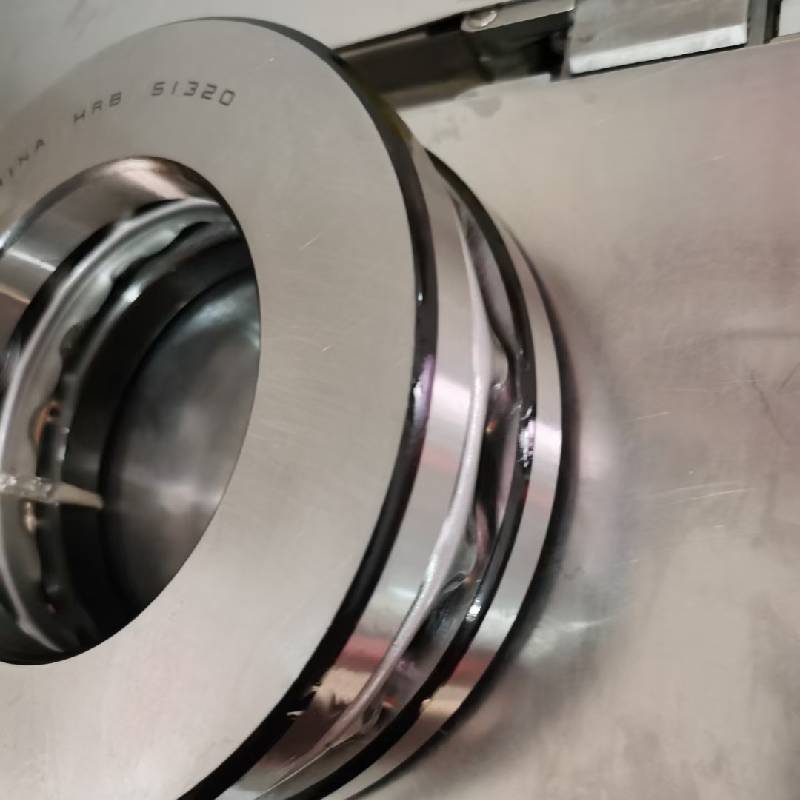
Nov . 07, 2024 11:24 Back to list
Optimizing Lubrication Techniques for Enhanced Performance of Cylindrical Roller Bearings
Cylindrical Roller Bearing Lubrication Essential for Optimal Performance
Cylindrical roller bearings (CRBs) are crucial components in numerous mechanical assemblies, including automotive, industrial machinery, and aerospace applications. Their ability to support high radial loads while accommodating some axial displacement makes them a popular choice in various engineering designs. However, the longevity and efficiency of these bearings are significantly influenced by their lubrication. This article explores the importance of lubrication in cylindrical roller bearings, key lubrication methods, and best practices for ensuring optimal performance.
The Importance of Lubrication
Lubrication plays a vital role in reducing friction and wear between the rolling elements and the raceways of the bearings. When properly lubricated, cylindrical roller bearings can achieve smoother operation, lower operating temperatures, and extended service life. Without adequate lubrication, bearings can suffer from increased friction, overheating, and eventually, catastrophic failure due to material fatigue and wear.
Moreover, lubrication helps in the removal of contaminants and debris from the bearing surfaces. These impurities can compromise the integrity of the lubrication film and lead to accelerated wear. Thus, maintaining clean and effective lubrication is essential for the reliability of cylindrical roller bearings.
Types of Lubricants
Several types of lubricants are commonly used for cylindrical roller bearings, including oils, greases, and solid lubricants. Each type has its unique advantages and application scenarios
1. Oil Lubrication Oil is often preferred in high-speed applications as it provides excellent cooling and has a lower viscosity, allowing for minimal friction. Oil can be applied via an oil mist or oil bath system, ensuring that the bearing surfaces remain adequately lubricated. The choice of oil, whether mineral-based or synthetic, can influence the bearing's performance under varying temperatures and loads.
2. Grease Lubrication Grease is a semi-solid lubricant that combines a base oil with a thickening agent. Grease is ideal for applications where sealing and retention are necessary. It provides good protection against corrosion and debris ingress, making it suitable for applications with lower speeds or where maintenance intervals are longer. However, excessive grease can lead to friction and overheating, so proper application is essential.
cylindrical roller bearing lubrication

3. Solid Lubricants In specialized applications, solid lubricants such as graphite or molybdenum disulfide may be used. These materials can withstand extreme conditions and can often provide lubrication even in the absence of liquid lubricants. Solid lubricants are typically used in environments that are harsh or where regular maintenance is impractical.
Best Practices for Effective Lubrication
To maximize the performance and lifespan of cylindrical roller bearings, certain best practices should be adhered to
1. Regular Monitoring Regularly check the lubrication condition and quantity. This ensures that the lubricant is performing optimally and that the bearing surfaces are protected. Implementing condition monitoring systems can help in identifying potential lubrication failures before they escalate.
2. Correct Lubricant Selection The choice of lubricant should be based on the specific operational conditions of the bearing, including load, speed, temperature, and ambient environment. Consulting with lubrication experts or manufacturers can provide insights into the most suitable lubricant for your application.
3. Proper Application Techniques Avoid over-lubrication or under-lubrication, as both can lead to premature bearing failure. Following manufacturer guidelines regarding lubrication intervals and quantities can greatly enhance bearing performance.
4. Contaminant Control Implementing sealing solutions can help prevent contaminants from entering the bearing assembly, thus preserving the integrity of the lubricant. Routine maintenance and cleanliness in the operating environment are equally crucial.
Conclusion
In conclusion, effective lubrication is paramount for the performance and durability of cylindrical roller bearings. Selecting the appropriate lubricant, applying it correctly, and maintaining clean operating conditions can significantly extend bearing life and efficiency. By adhering to best practices in lubrication management, engineers and maintenance personnel can ensure that cylindrical roller bearings remain reliable components in their respective applications for years to come.
Latest news
-
Premium Deep Groove Ball Bearings | High Speed & Reliability
NewsAug.29,2025
-
Durable Scaffolding Clamps - Secure & Reliable Tube Connectors
NewsAug.28,2025
-
Common Failures in Thrust Ball Bearings and Solutions
NewsAug.22,2025
-
How Tapered Roller Bearings Can Take Shock Loads
NewsAug.22,2025
-
Angular Bearings in High-Precision Spindles
NewsAug.22,2025
-
The Impact of Misalignment on Cylindrical Roller Bearing Performance
NewsAug.22,2025
